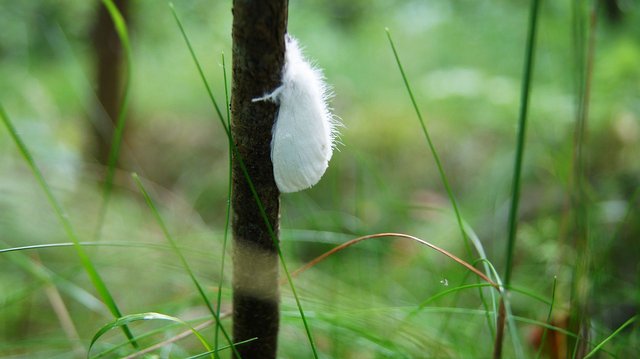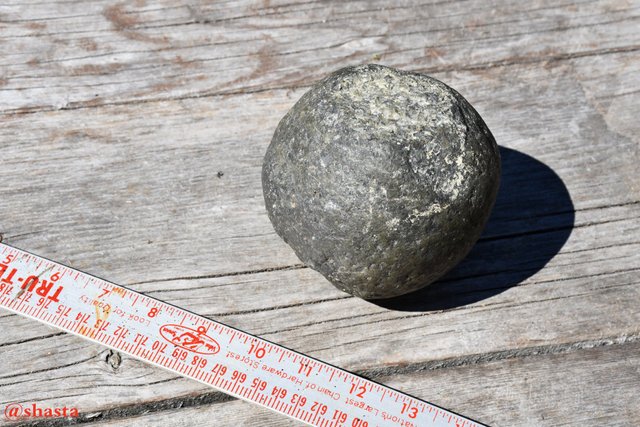Nature Identification Thread #17- Now Paying out Steem Basic Income Memberships to Participants!
It's time for the weekly nature identification thread! Post pictures of plants, animals, rocks, or other cool stuff that you've photographed but can't identify, and I, along with anyone else who would like to help, will try and help you identify it. I'll be making some changes to it- most notably, I'll be using the SBD proceeds from this post to give out @steembasicincome memberships to people who post stuff to be identified or help me identify photos.

The amusingly named dog vomit slime mold, Fuligo septica, is named for the ugly color it turns once its brilliant yellow coloration fades. It's frequently found in urban areas after heavy rains. Dog vomit slime mold has the peculiar ability to cope with massive levels of heavy metals- in fact, it can survive higher zinc concentrations than any other organism. This is because the bright yellow pigment in this slime mold, fuligorubin A, actually reacts with the metals, converting them to a safe form. [Image source]
Remember: The most important information you can give along with any photo to be identified is its geographical location. This narrows down the range of possibilities more than any other info you can provide.
Plants:
Along with the photo, add where you found it, the time of year, the approximate altitude, and any interesting scents or textures not caught in the photo.
Animals:
Along with the photo, add the location you found it, the time of year, the sounds it made, any interesting behaviors, and any other features not caught well in the photo.
Rocks:
Along with the photo, add the location you found it, a description of the terrain it was found in, whether it was attached to a rock outcrop or found loose on the ground or buried in the soil, a description of its texture (especially its grain size), and a description of its weight and density. Fossils are included in this category. (Despite my greatest expertise lying here, rocks tend to be some of the hardest things to identify in a photo.)
Fungi:
I will not be identifying mushrooms and fungi for foraging purposes. Mushrooms should really only be identified for foraging purposes in person and by an expert. If another contributor wishes to identify them, that's their call, but I encourage them to be similarly cautious. I might also try to identify a few fungi that are clearly not being looked at for the purposes of eating, but that'll be a case by case decision.
@valth, @motordrive, @snowyknight, & @artofwisdom all earned @steembasicincome memberships for submitting to the last nature identification thread or helping identify submissions. Congratulations!
Bibliography:

https://steemit.com/nature/@artofwisdom/any-idea-what-that-can-be

White Furry Moth?
It does look like a leg in the second photo wrapped along the stalk. Actually in both photos!
White furry moth isn't an unreasonable ID, but they live in Canada, not Europe, so I dunno.
found it!
https://en.wikipedia.org/wiki/Yellow-tail
https://swiatmakrodotcom.wordpress.com/2014/01/20/kuprowka-zlotnica-euproctis-similis-moda-na-rude-kuperki/ (pl)
Nice one @artofwisdom!
Yep, that's it alright! Nice ID!
Yellow-tail
The yellow-tail, goldtail moth or swan moth (Euproctis similis) is a moth of the family Erebidae. It is distributed throughout Europe to the Urals, then east across the Palearctic to Siberia. It is also found in Sri Lanka.
This species has a wingspan of 35–45 mm, the female usually noticeably larger than the male.
Interesting about the dog vomit slime mold!
''reacts with the metals, converting them to a safe form''
What kind of rock is this and is it a possiable tool?

More info about this rock on the posting :-)
Snowyknight's ID looks pretty good to me! I'd wager against it being a tool, but I always tend to lean that way with identifications.
Thanks!
@mountainwashere @snowyknight @artofwisdom
Update on round rock! :-)
Visited a local rock and fossil man in town and
had him take a closer look at my cannon/hammer.
Dolerite, no hornblend or feldspars.
Lots of quartz and mica.
Deposited by the river long ago up high
in shale. Not sure the outer greenish
coating less it's tested $.
I asked if it could of been a mammoth
bone breaker and he said the mammoths
were further north. Tool usage in the past
hard to say, recent tool usages were me
to hammer a loose nail. The chipped
bottom was already like that when found.
Does dolerite sound about right?
I buy it! Exciting. Could be then a dyke in the shales, postdating the shales. But igneous for sure! Likely transported a great ways from wherever it cropped out. Would be good to know if the landslide materials were composed of: in situ rock, or some mix of sediments. For a future trip back there and posting!
I really like the info @snowyknight found!
Thanks again snowy :-)
Thank you very much @mountainwashere
for this really cool helpful weekly thread!
Hmmm. interesting.
Pages 10 and 11 of this USGS report may contain the answer.
https://pubs.usgs.gov/bul/0861/report.pdf
If these rocks are local and the landslide came from local materials and not within a till that came from somewhere else in the drainage, then perhaps it is either lower Jurrassic volcanics including greenstone and quartz porphhry. Late Jurassic granitic rocks. Or upper Cretaceous shales and sandstones. I think it could be one of the first two. Looks green. Looks like greenstone.
It is hard enough to erode into that nice sphere so granites or volcanics. So perhaps not the soft sedimentary rocks found in the area.
Looks like there are fine veins in the broken bit visible too, i.e. fluid flow (while it was in situ). Also looks like it was altered (i.e. alteration). Hope this helps a bit. Could be easily from one of the first two in the Jurassic sequence. Sorry, but to be clear, I do not think it was a cannonball.
Also due to roundness, it likely was transported in a river or glacial-fluvial system as some point before you found it. Hope this helps!
Mammoth bone breaker, I like that! There are many fossils
of those here, I keep hoping to find some teeth on the beach.
Thank you very much @snowyknight for this link to a very
interesting read!!! 👍
Check out the link I left @artofwisdom above here for modern
cannonball use here lol
I checked it under another light and it does look greenish!
Shale that's what the slide was we think. Will have to refind
this spot again. It's been some 18 years now.
I'll share another paper with you about the mammoth bone breaking. It is really awesome and was just published in Nature and says that humans may have been in the Americas for over 100,000 years! Shocking but why not!
It looks a bit too coarse grained to me to be shale, but that doesn't mean it did not get transported from someplace else, but ice or water. Who knows! Take some photos if you go back!!!
ps. is it a possible tool!? Maybe? Hammer? Mammoth-bone breaker? Maybe!
i think it is a cannonball, damaged either by hitting the hard target eg. stone wall or during the mentioned landslide, is there any records of battles around the place where that was found?
That was our first thought was cannonball when
we found it. Perhaps the voyages of Captain Cook.
Or early devices used to clear avalanches was another
thought.
Alaska Railroad Crew Uses Cannon to Create an Avalanche
That's just north of us :-)
upvote for me please? https://steemit.com/news/@bible.com/6h36cq
To listen to the audio version of this article click on the play image.

Brought to you by @tts. If you find it useful please consider upvoting this reply.
nice post.
Last week I think I put a rabbit picture that you identified as probably non native that felt right at home...
Here's another rabbit, might this be a native species? From a couple weeks ago, greater Seattle area